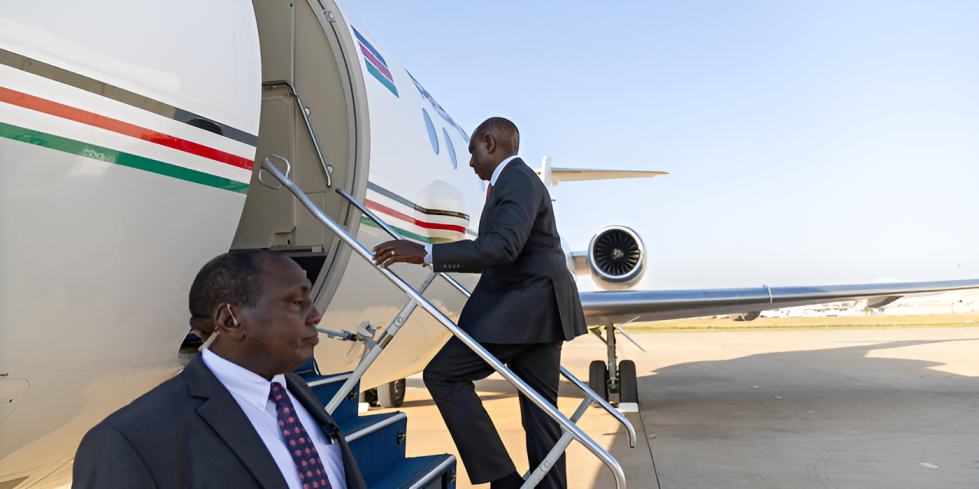Ruto departs for Addis climate summit, grand hydro dam launch

Ruto is expected to champion fair resource valuation, equitable carbon pricing, and financial reforms aimed at easing Africa’s debt burden while unlocking more climate finance.
President William Ruto is expected to leave the country for Ethiopia today to attend the second Africa Climate Summit in Addis Ababa and the inauguration of the Grand Ethiopian Renaissance Dam (GERD).
According to a statement by State House spokesperson Hussein Mohamed, the summit brings together African Heads of State and Government to advance the continent’s leadership in climate action and green growth.
President Ruto will launch a report titled “From Nairobi to Addis Ababa: Africa’s Journey of Climate Action and Partnership,” which assesses progress since the first summit, reviews current realities, and outlines future pathways.
While in Addis, Ruto will witness the signing of the Cooperation Framework for the Africa Green Industrialisation Initiative (AGII).
"The framework will coordinate financial and technical support, mobilise investment, and align with key priorities such as the Accelerated Partnership for Renewables in Africa, AfCFTA, and the Alliance for Green Infrastructure in Africa (AGIA)," said the statement.
As chair of the Committee of African Heads of State and Government on Climate Change (CAHOSCC), President Ruto is expected to champion fair resource valuation, equitable carbon pricing, and financial reforms aimed at easing Africa’s debt burden while unlocking more climate finance.
The President will also address the Africa-CARICOM Summit, where leaders will deliberate on reparatory justice, debt sustainability, transcontinental cooperation, and strategies to strengthen trade and tackle global challenges.
He will also attend the inauguration of the Grand Ethiopian Renaissance Dam, a flagship project symbolizing Africa’s self-reliance.
The Grand Ethiopian Renaissance Dam (GERD) is a 6,450 MW hydropower project nearing completion on the Blue Nile in Ethiopia, located about 30 km upstream of the border with Sudan.
It is set to become the largest hydropower project in Africa.
